Among the many benefits that your brand can reap from marketing automation software, the most basic and important is the ability to boost your bottom-line figures from marketing automation platforms. You save costs, save time, save resources while retaining existing users, and increase the overall Customer Lifetime Value (CLTV) for your business. Sounds pretty good, right? The real question is, how do you leverage such technologies for your company? It’s not enough to subscribe to a platform and simply hope that it works. Marketing Automation is just one aspect of your entire marketing plan and for it to be a successful one, the plan needs to be backed by a well-thought-out marketing automation strategy!
In this article you’ll learn:
- Why do you need a marketing automation strategy?
- 10 pitfalls to avoid while designing a marketing automation strategy:
- Incorrect automation workflows
- Lack of a centralized data platform
- Complexity of the tool
- Longer content creation cycles
- Absence of a lead scoring framework
- Choosing the wrong channels for the wrong purpose
- Incorrect user segmentation
- Inability to identify early signs of campaign optimization
- Less campaign personalization options
- Lack of real-time analytics & reporting
- How to create a winning marketing automation strategy?
In the subsequent sections below, you’ll learn why you need a marketing automation strategy, reasons why marketing automation strategies fail, and things to focus on while designing a marketing automation strategy. Let’s jump right into it.
Why do you need a marketing automation strategy?
I interact with marketers, product managers, and CX folks quite often and realize that most of these experts are pretty clear about what they exactly want to achieve by automating their marketing efforts. Some even know how they’ll get there. But for a lot of them, the ROI of marketing automation is far from sight because they do not unleash the full potential of a marketing automation platform. And, this is not entirely their fault. A lot of marketing automation platforms out there do not provide the right training or the know-how of leveraging their technology.
Marketing automation tools are powerful and when properly used, they can help you automate a wide variety of tasks for your Marketing, Sales, and Customer service functions. However, with great power comes great responsibility!
10 pitfalls to avoid while designing a marketing automation strategy
Here are 10 major reasons why your marketing automation strategy could either hit a roadblock or not deliver the results you’ve been aiming for:
1. Incorrect automation workflows

There are 3 types of digital customers:
- Offline researchers, Online purchasers
- Online researchers, Offline purchasers
- Online researchers, Online purchasers
Both online and offline purchases can be influenced through multi channel marketing and this creates complexity in designing an ideal customer journey. Every customer will follow a completely erratic path before they make a purchase and as a marketer, it makes your life difficult – How do you choose the right touchpoints to automate? How to attribute your marketing automation efforts to your bottom-line figures? How to design an automation workflow that is to the point and impactful?
Just by implementing the right automation workflows, you can save 80% of your time, energy, and resources on repetitive tasks and boost your marketing ROI.
2. Lack of a centralized data platform
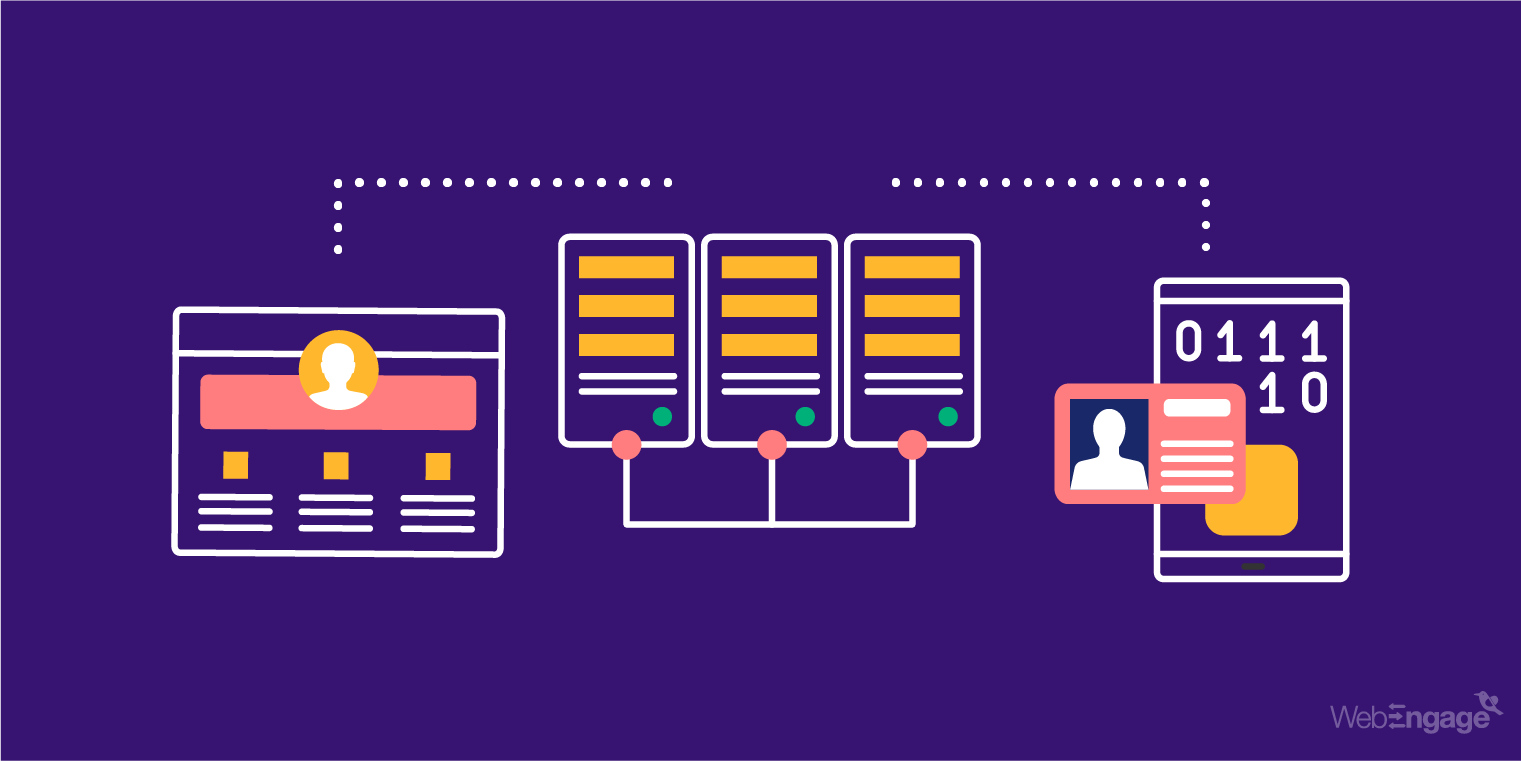
For your marketing automation tool to make an impact, it should enable you to add context to your messaging by analyzing user actions and then sending relevant communication
For example, in the case of an E-commerce company, the marketing automation tool needs to know when a user has abandoned his/her cart and then send them a checkout reminder. Or when a user has been inactive for 30 days and then send them a 20% off discount coupon to bring them back to your platform. This information needs to flow seamlessly between your CDP and your marketing automation platform.
Another avenue where integrations play a major role is while providing a truly multichannel digital experience. Customers start their journey on one channel and end on probably the 5th or the 6th channel. It is important to let your customers resume from where they left off. Give your customers the flexibility to start their interactions via email and continue the interaction on the web/app. Integrating your channels with a single automation platform gives you complete control over how and when you connect with your customers. Marketers often make the mistake of onboarding various single-channel tools, leading to a lot of data falling through the cracks.
For your marketing automation tool to make an impact, it should enable you to add context to your messaging. Read more - via @webengage Share on X3. Complexity of the tool

How much time and how many clicks does it take for you to segment your users and send them an engaging email campaign? Does it feel overwhelming to send personalized emails? Did the sales guy who sold you the platform make everything feel like a breeze and now you’ve lost your way and everything seems just too difficult? We get you!
If you have to ‘Google’ how to work your way on a particular platform, it may be time for you to look for alternate solutions.
Complex solutions often give rise to a lot of pitfalls to your campaigns. There will (in most cases) be one flip-switch hidden somewhere that missed your attention and your campaign is sent to the wrong segment of users. Or even worse, to EVERYBODY!
Pro-tip: Evaluate the simplicity of a platform by the comfort of your interns in using it.
4. Longer content creation cycles
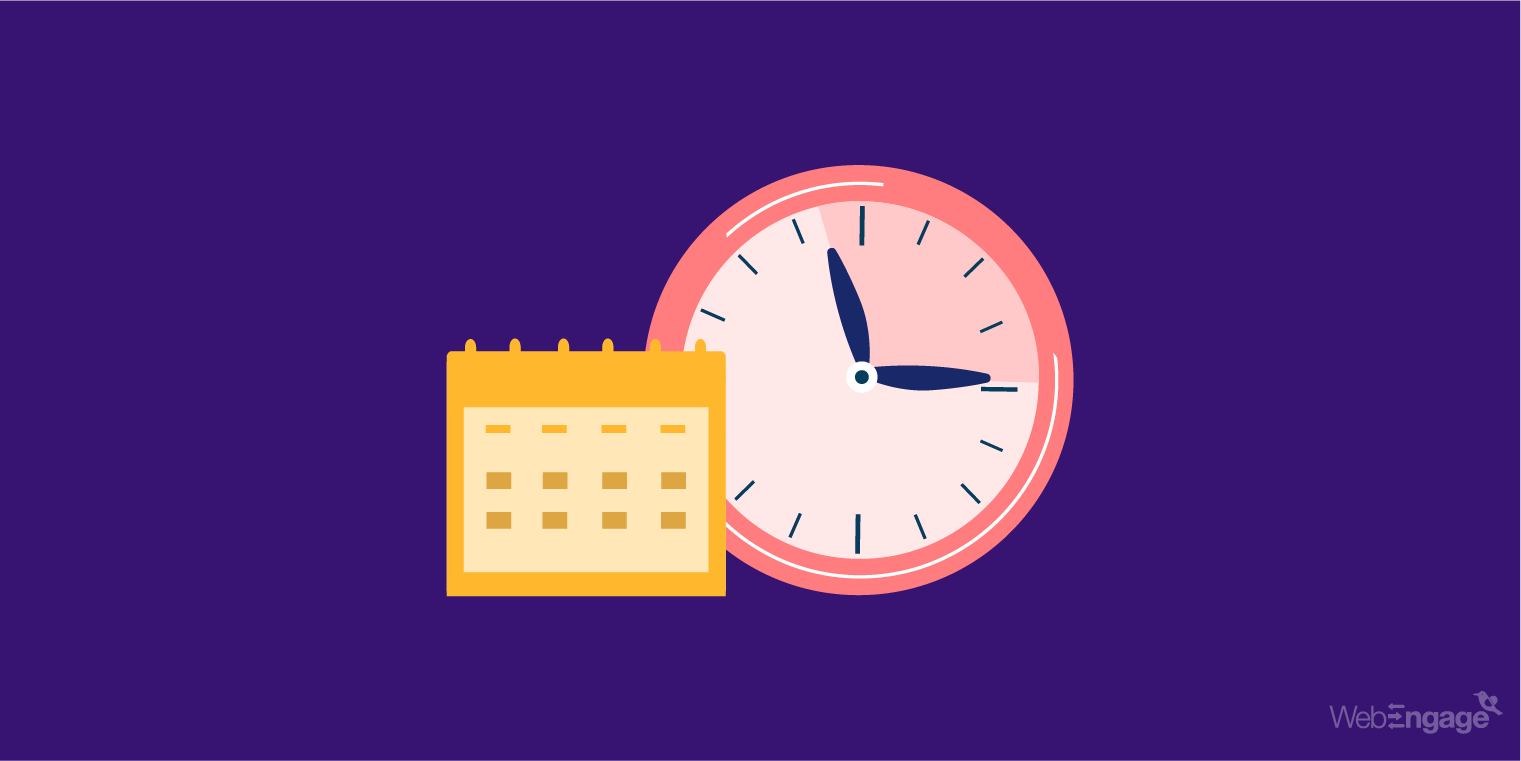
Imagine this – you are an E-commerce marketer. You have a mix of 10 different channels for 20 different campaigns. Can you visualize the quantum of content you will be creating daily? Seems daunting and exhaustive, doesn’t it?
There are times when you need dedicated resources to create content for your campaigns and then there are times when you need to launch ad-hoc campaigns. Just change a couple of banners, some text here and there, and you are set to go live. Spending too much time obsessing about your content can slow down the process. In the long run, it will not give you the expected results from your marketing automation strategies.
Spending too much time obsessing about your content can slow down your publishing process. Read more - via @webengage Share on X5. Absence of a lead scoring framework

Another reason why most marketing automation strategies fail is due to the lack of a lead scoring mechanism. Assigning a score to your users based on their activities lets you identify the low-hanging fruits for immediate addition to your revenue. Not just that, you can identify and bucket users based on their activity status from highly active to barely active. Highly active users are easier to retain while inactive or less active users are much harder to retain.
For D2C brands, paid customers with low activity scores are highly likely to churn. Thus, you can design retention strategies for these customers. On the other hand, free users with high activity scores are more likely to become paid customers if you offer the right value proposition. Lead scoring is an amazing technique to further increase your conversion rates.
Assigning a score to your users based on their activities lets you identify the low-hanging fruits for immediate addition to your revenue. Read more - via @webengage Share on X6. Choosing the wrong channels for the wrong purpose
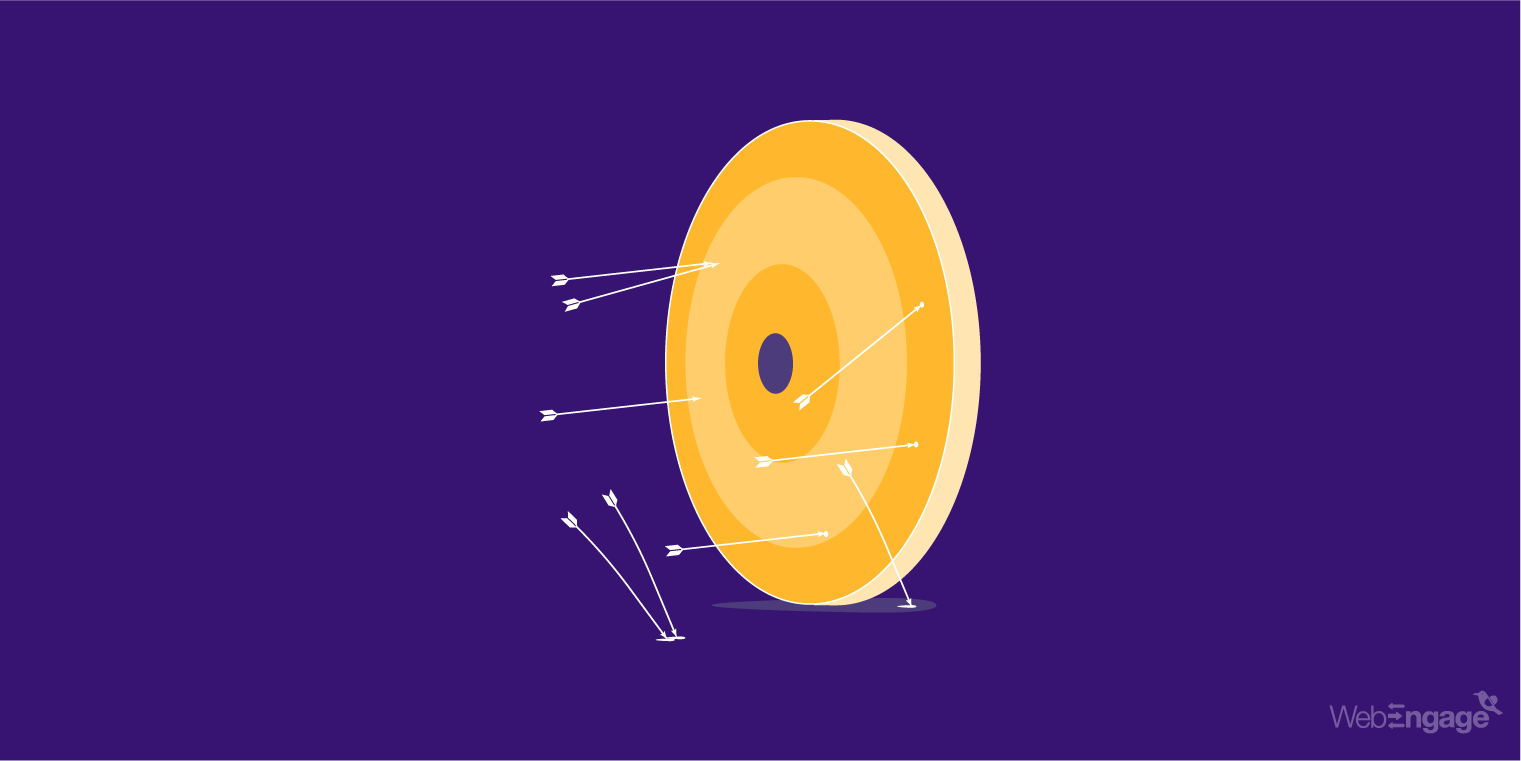
Here’s a list of some commonly used channels and their purpose:
- Email – Share announcements, updates & reminders. Anything that needs to be saved for later use
- Mobile Push Notifications – Get your users to open the app through push notifications and access the content. For example deals of the day, featured content, etc.
- Web Push Notifications – Update your users with regards to their recent activity. For example alternate/similar content, frequently viewed items, etc.
- In-App Notifications – Critical account updates, shipment tracking information, etc.
- Web Overlays – Offers, flash deals, sign-up forms, or any other top-of-the-funnel action you wish your visitors to take on your website.
- SMS – Transactional updates, account updates, or renewal reminders, promotional messages.
- WhatsApp – Transactional updates, account updates, or renewal reminders (Only if the customer has shared an explicit consent)
- Facebook Adverts – Targeting users who are interested in a product/category but may not immediately convert
- Google Adverts – Targeting users with a high intent to purchase. These are users in the early stages of product evaluation.
There is no right or wrong method of choosing the channels for your messaging. You can choose more than one channel for your campaigns. However, a good strategy would be to NOT choose every channel for every message. Pick one primary channel and use at the most 2 more channels as a backup.
Engage your customers with WebEngage’s Retention OS
7. Incorrect user segmentation

Relevancy is one of the deciding factors for the effectiveness of your campaigns. Imagine sending irrelevant campaigns to the wrong set of audiences. All that effort, time, and resources invested in creating the campaign go to waste if they land in the wrong inbox! Incorrect segmentation (segmentation done based on wrong attributes or parameters) can give a hit to your deliverability, the engagement rates, and may even end up offending your customers.
Besides incorrect segmentation, your automation strategy may still fail if your segmentation is either not live, or done on stale data. What may be relevant to a user today may not necessarily be relevant tomorrow. Real-time segmentation helps in providing an in-the-moment experience for your customers.
This gap can arise due to any of the following reasons:
- Partial or no integration of your marketing automation platform with your data systems.
- The platform does not support user segmentation capabilities
- Incorrect identification of user attributes for the target audience.
Either way, mismanaged data, and incorrect targeting can leave a lasting impact on your users and put your brand on the ‘do-not-buy-from’ list.
What may be relevant to a user today may not necessarily be relevant tomorrow. Real-time segmentation helps in providing an in-the-moment experience for your customers. Read more - via @webengage Share on X8. Inability to identify early signs for campaign optimization
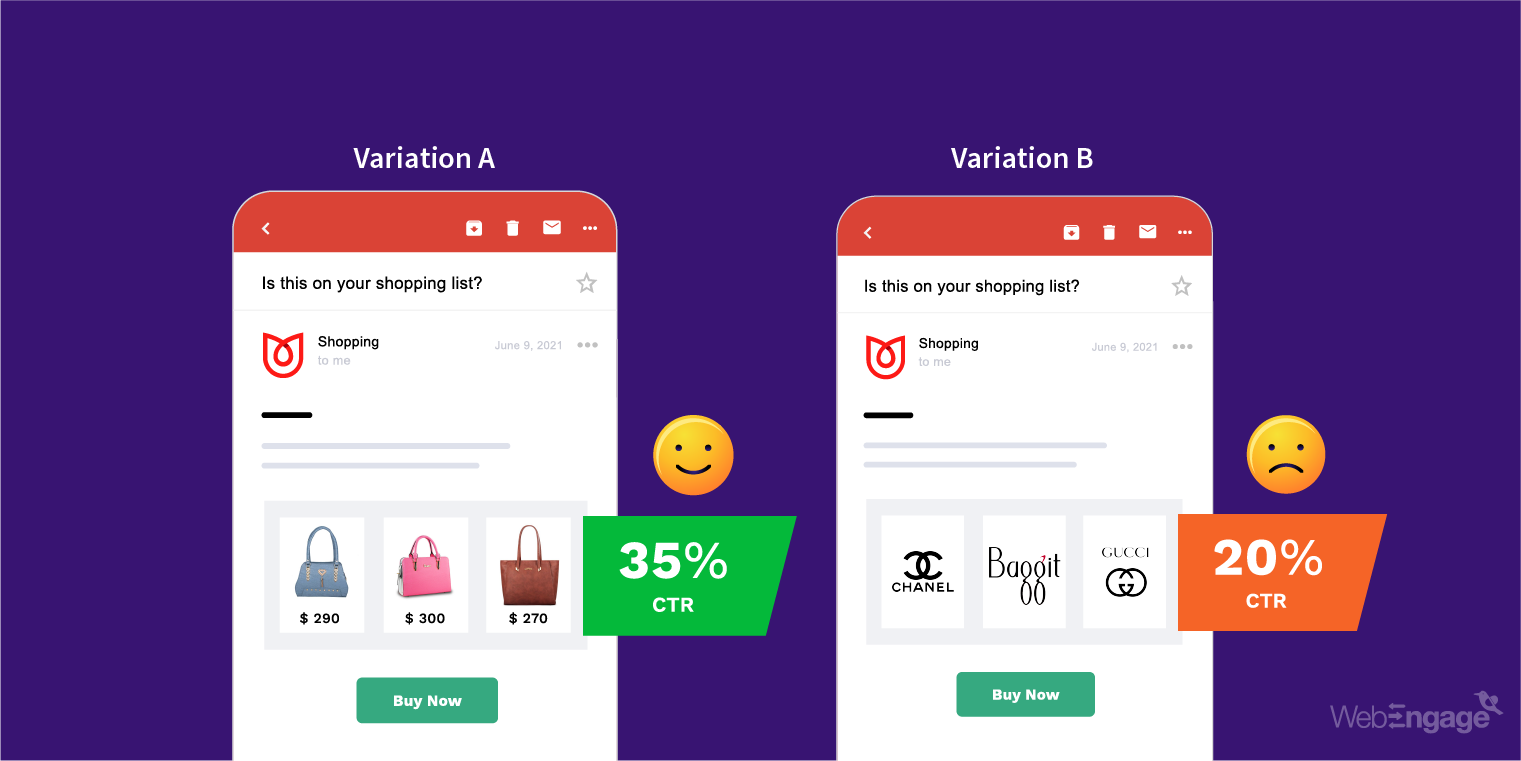
A/B Testing and optimization of campaigns can lead to higher engagement rates. As a marketer, it is extremely important to test your campaigns. Test them on multiple devices, multiple form factors, and most importantly, test them on your audience. Pick a smaller sample size and run variations of your campaigns on them. Identify the highest-performing campaign based on engagement rates and trigger that for the rest of your audience.
As a marketer, it is extremely important to test your campaigns on multiple devices, form factors, and most importantly, on your audience. Read more - via @webengage Share on X9. Less campaign personalization options
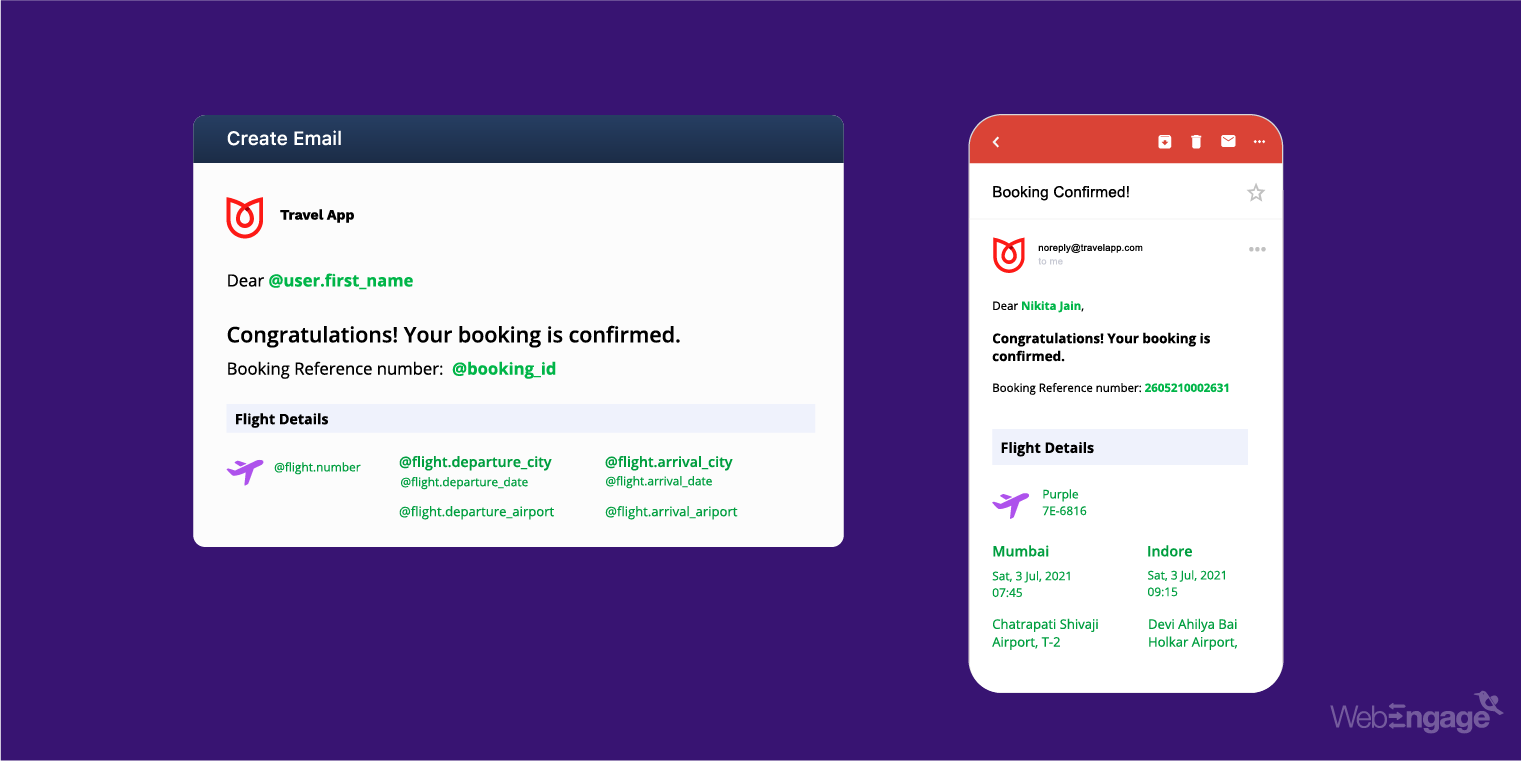
In the era of hyper-personalization where customers expect a tailor-made experience, just personalizing your messages with your users’ first names is not enough. As a user, I expect a brand to put my data to better use. Show me offers that I’m interested in, show me product recommendations that I think I need, show me that you care.
With Artificial Intelligence and Predictive Analytics shaping the future of consumer businesses, brands are now anticipating what customers might purchase with over 80-90% accuracy. However, on the other spectrum, there are large brands still struggling with the basic challenge of managing large volumes of customer data.
We’ve all been addressed by wrong names, incorrect genders, received random account updates, and a lot more because of incorrect data mapping. While this may seem like an honest mistake, users will not cut you slack and drag your brand directly to social media. Brands today are busy dousing fires on social media for multiple reasons, and incorrect mapping of customer data just adds more fuel to the fire.
With AI and Predictive Analytics shaping the future of consumer businesses, brands are now anticipating what customers might purchase with over 80-90% accuracy. Read more - via @webengage Share on X10. Lack of real-time analytics & reporting
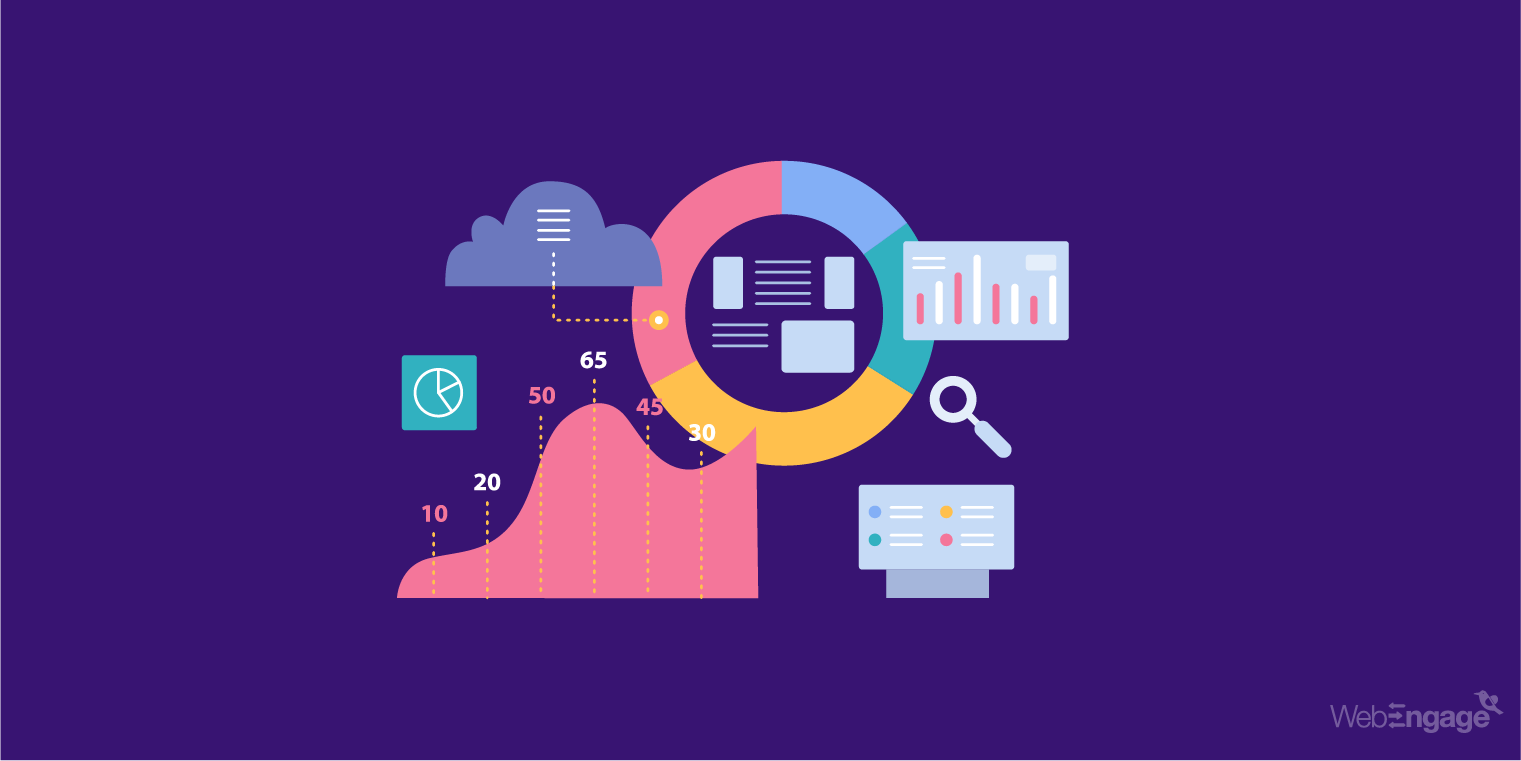
And finally, analytics and reporting act as a major anchor in the success of a marketing automation strategy. As Peter Drucker rightly said, “What gets measured, gets managed.” Real-time visibility of your campaign performance plays a crucial role in the success of your campaigns. Delayed reporting, incorrect reporting, or even limited reporting can lead to failure in your campaigns.
Picture this – You have a sale going live in 2 days. You planned an announcement campaign today. However, you only get your marketing campaign insights after a 24-hour refresh. Unfortunately, before activating your campaign, you selected the wrong segments, and your emails were triggered to the wrong audience. What would you do in this case? You obviously cannot push your sale by another day.
On the other hand, if you had real-time insights into your campaign performance, your engagement rate would instantly indicate low numbers, high unsubscribes, and spam reports, letting you know that there was a problem in your setup. You can fix the error and resend the campaign with a minor delay of 10-minutes.
Additionally, analytics and insights let you make strategic decisions about your forth-coming campaigns. You can analyze trends from past campaigns, and course-correct existing campaigns based on their performance.
What gets measured, gets managed. Real-time visibility of your campaign performance plays a crucial role in the success of your campaigns. Read more - via @webengage Share on XNow that we know what not to do, let’s look at what you should do to create a successful marketing automation strategy.
Subscribe to our newsletter to stay updated on the latest in B2C marketing
How to create a winning marketing automation strategy?

Every user that enters the sales funnel can be categorized into one of the following seven categories:
- Awareness – Users who are aware of your brand but are not ready to transact
- Interest – Users who are interested in a product category and are in the initial phases of gathering information
- Consideration – Users who are comparing products, visiting multiple sites, benchmarking prices, and trying to find the best fit for their needs
- Purchase – Your pool of customers who make a transaction on your website/app
- Retention – Customers you’ve managed to retain and have repurchased from your brand
- Advocacy – Customers who talk positively about your brand. These may even include customers who’ve only purchased once from you but are happy with the experience you’ve provided them.
- Loyalty – These are customers who’ve repurchased from you and also speak highly about your brand
While designing your marketing automation strategy, your end goal is to move your customers from the awareness stage to the loyalty stage. Marketing automation can help you move more users from one stage to another. Here are 5 things you should keep in mind while strategizing your plan of action:
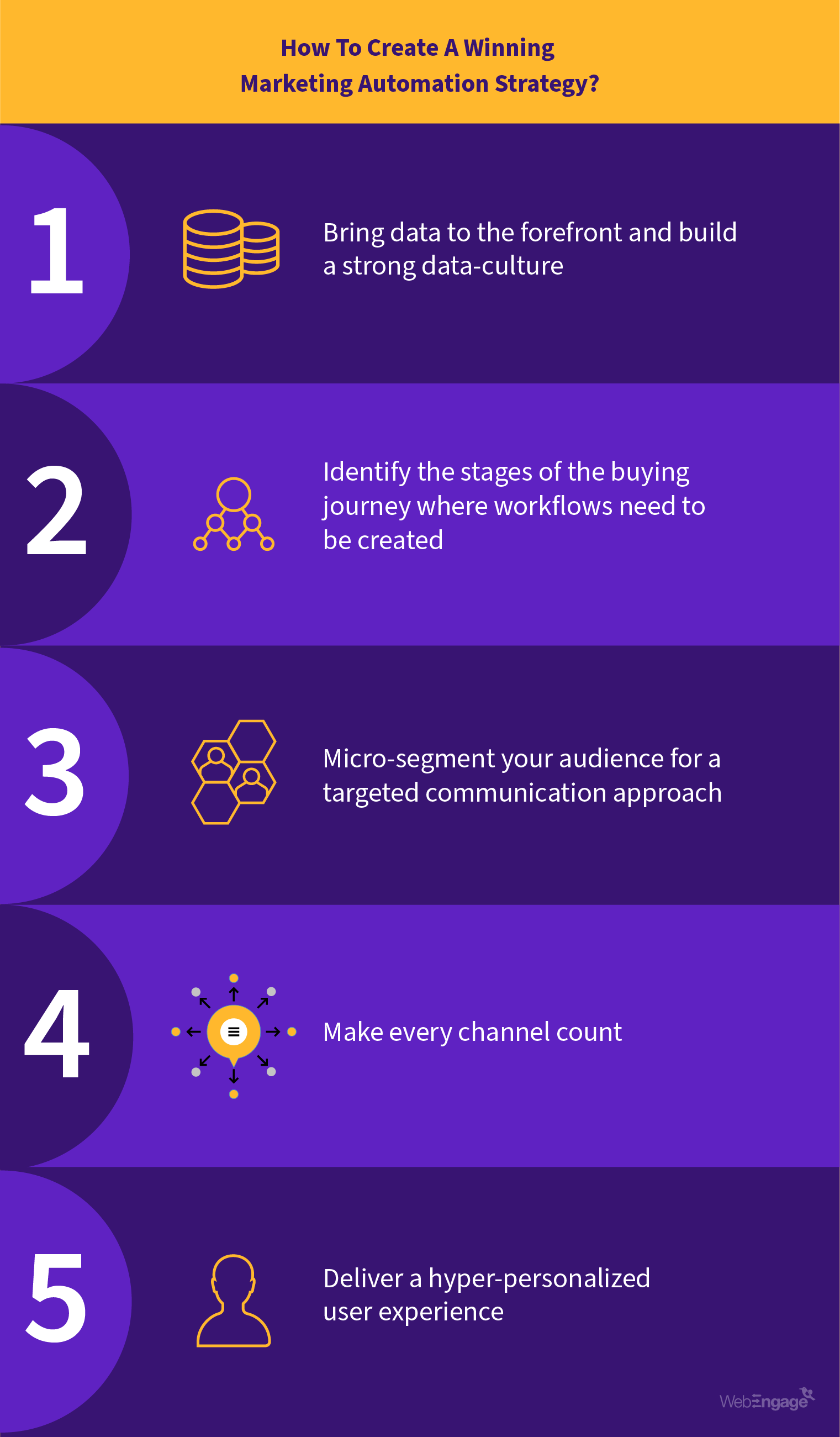
1. Bring data to the forefront and build a strong data-culture
If your aim is hyper-personalization and you wish to target the right users, with the right messaging at the right time, a data-driven marketing approach is extremely important. To build a great data culture, you need to first collect as much information about your users as possible. Then derive user attributes that will help you in segmenting these users at a later stage. A highly targeted communication will lead to higher engagement rates for your campaigns.
The next thing you need to consider is the flow of data. You need the information to flow from your existing data system and recommendation engines to your marketing automation platform. By integrating quantum computing use cases, this data flow can be optimized to reduce latency and enhance decision-making in real-time. And once your users have interacted with your messages or completed the desired actions, stream that data back to your data systems.
Your aim should be to reduce the complexity of integration. A SaaS platform that uses APIs is better than on-premise or in-house solutions. There is a huge cost advantage to this.
Also, a dedicated platform will keep you updated with the latest features as opposed to raising a feature request and going through the entire process of building a feature from scratch with the in-house tech teams. It’s just faster.
A SaaS platform that uses APIs is better than on-premise or in-house solutions. There is a huge cost advantage to this. Read more - via @webengage Share on X2. Identify the stages of the buying journey where workflows need to be created
Going back to the 7 stages of the buying journey outlined above, the transition from one stage to another can have multiple touchpoints. For example, in the consideration stage, a user can take multiple actions – they visit your product page, add certain products to cart but do not purchase, add products to their wishlist for later, check out user reviews online, check out unboxing videos on YouTube, go to competitor sites and do the same things over there as well.
To convert a user from the consideration stage to the purchase stage, you need to target these users at each of these touchpoints using a multi-channel strategy. If a user adds a product to their wishlist, keep them updated with offers and discounts. Or, if a user adds a product to the cart and does not complete the transaction, send them a reminder automatically within 2 hours. If a user is searching for the product on Google, show them ads about the product on your platform.
The best way to get started is by creating an ideal buyer persona and creating an ideal buying journey. Then brainstorm over all the variations that can branch out from this buying journey and make an extensive list of all the touchpoints where you can connect with your customers. Then create automation rules for each of these touchpoints and don’t forget the exceptions. For example – if a user visits a product page for the first time, show them welcome deals.
Touchpoint mapping: Start by creating an ideal buyer journey. Then brainstorm over all the variations that can branch out from this buying journey and make an extensive list of all the touchpoints where you can connect with your customers. Read… Share on X3. Micro-segment your audience for a targeted communication approach
Not all your users will be interested in the same products. And one of the quickest ways to lose a customer is to flood their inbox with unrelated and unwanted emails. For example, you might not want to send an on-ground/offline event invitation to a subscriber who lives six states away. So, to avoid those situations, you should segment your user base.
Segmenting is clustering your audience into strategic, separate, and smaller groups. It helps you collect more information on your users, and increases their retention by catering to their specific needs. Commonly, customers are segmented by:
- Demographic information
- Geographical information
- Past buying behavior
- Engagement level
Manually, combing through each customer would be a lot of work. But with marketing automation, segmentation can be done easily, in real-time, with live segmentation. Remember the data culture we spoke about earlier? You can pull in various user attributes and create segments that best fit the objective of your campaigns.
Not all your users will be interested in the same products. And one of the quickest ways to lose a customer is to flood their inbox with unrelated and unwanted emails. Read more - via @webengage Share on X4. Make every channel count
“Just because you can, doesn’t mean you should!”
Just because you have a plethora of channels at your disposal where you can connect with your customers, you certainly do not need to use all of them every time you wish to update your customers about an upcoming offer, feature, or something new in general. Sometimes just a simple push notification is enough or even an in-app message!
Excessive notifications will only lead to one of two things: 1. Your users will either get immunized to your communications and ignore you outright or 2. they will shut all doors and you just won’t be able to get through. To avoid this, use the channel guide mentioned earlier to select the best channels suitable for your campaigns.
As a rule of thumb, we recommend using one channel at a time and have the others as backup. For example, if a user is not reachable on Email, you may try sending them an SMS or a push notification. But, certainly not all 3 at the same time. However, you can make an exception to this rule if you are coming up with a big event like a flash sale or a community meet-up which requires an aggressive communication strategy.
Excessive notifications will lead to one of two things: 1. Your users will either get immunized to your communications and ignore you outright or 2. they will shut all doors. Read more - via @webengage Share on X5. Deliver a hyper-personalized user experience
And lastly, make sure that your content is unique for every user. Personalize your communications with information that resonates best with the user. Factors like personalized product recommendations, reminders, offers and updates, increase the conversion rates by 3x over messages that just include the first & last name personalization.
Create communication rules and let your marketing automation platform take the center stage. A marketing automation platform can not only fetch information from your recommendation engine and your data systems but also smartly insert them into your communications so that every customer communication is unique and tailor-made.
You can also version-test your campaigns to identify which variation of your campaign works and which doesn’t. I cannot stress enough on the importance of A/B testing!
Pro-tip: Your motive is to push your users further down the conversion funnel. Resonating with your customers’ emotions into your copy can be a great way of doing that.
Conclusion
Fundamentally speaking, a marketing automation strategy comprises 4 parts – The Who, The When, The What, and The How. The Who corresponds to the right data culture, segregation and segmentation of your audience, and targeting rules. The When helps in identifying the touchpoints across the customer journey that require timely nudges to advance the users to the next stage. The What corresponds to the content, messaging, and the format in which you wish to communicate with your customers. And, the How is the secret to creating the perfect omnichannel user engagement strategy.
Now that you have the pointers to keep in mind while creating a strategy and all the reasons why your strategy could fail, you are well equipped to create the perfect recipe for a dish called Marketing Automation.
Take a demo with WebEngage today to implement these use cases, boost sales, and skyrocket your revenue.

































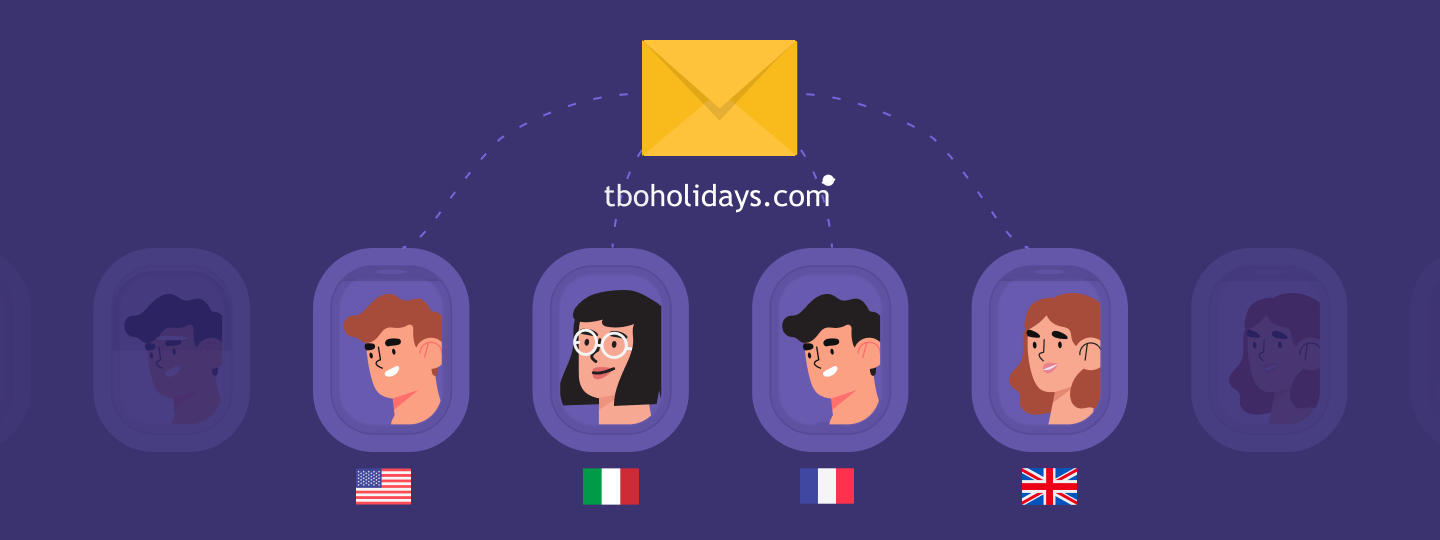
 Dev Iyer
Dev Iyer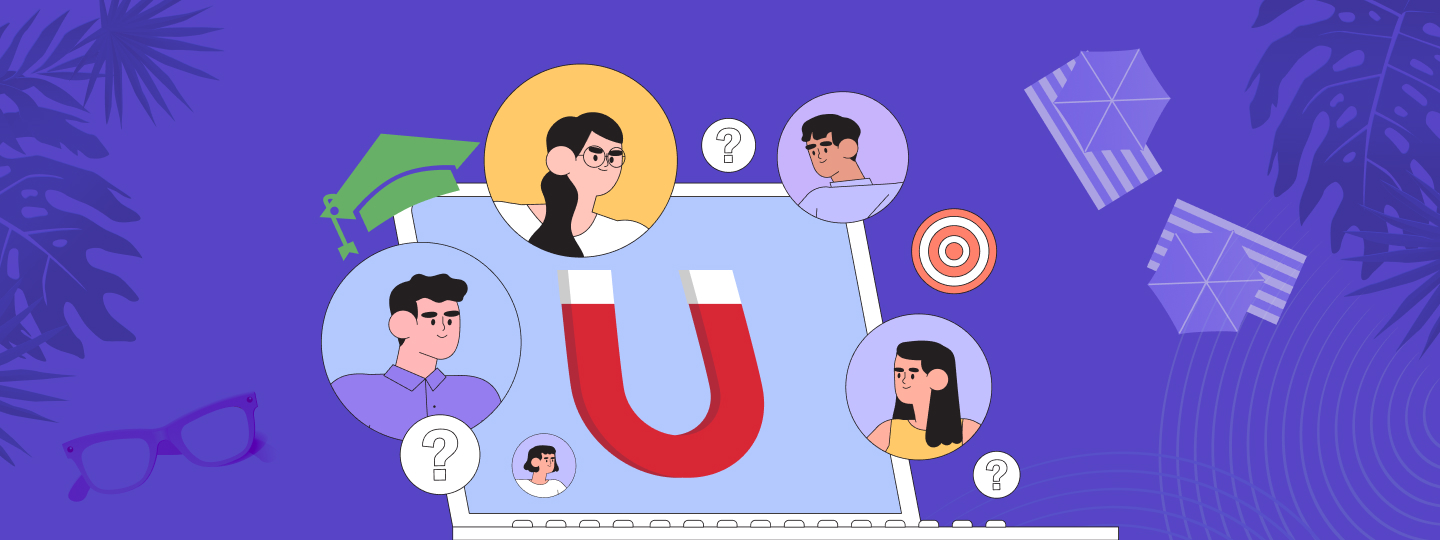
 Vanhishikha Bhargava
Vanhishikha Bhargava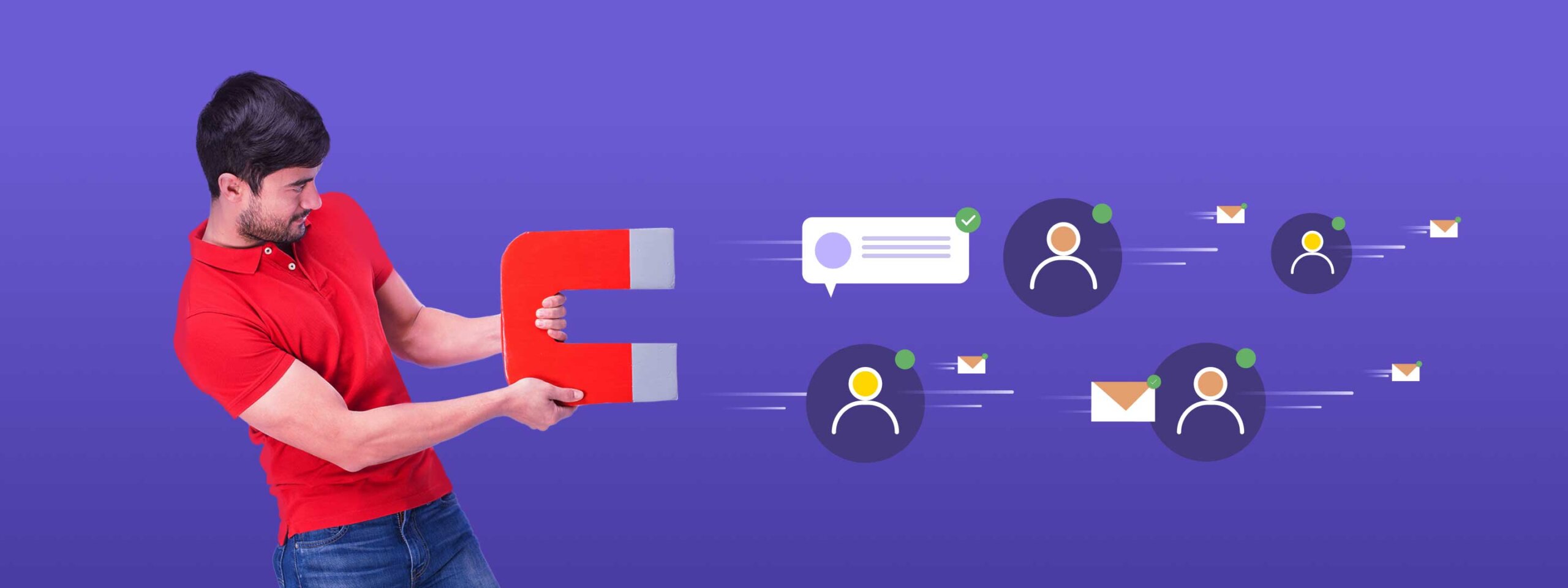
 Diksha Dwivedi
Diksha Dwivedi



